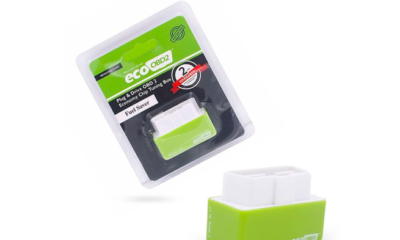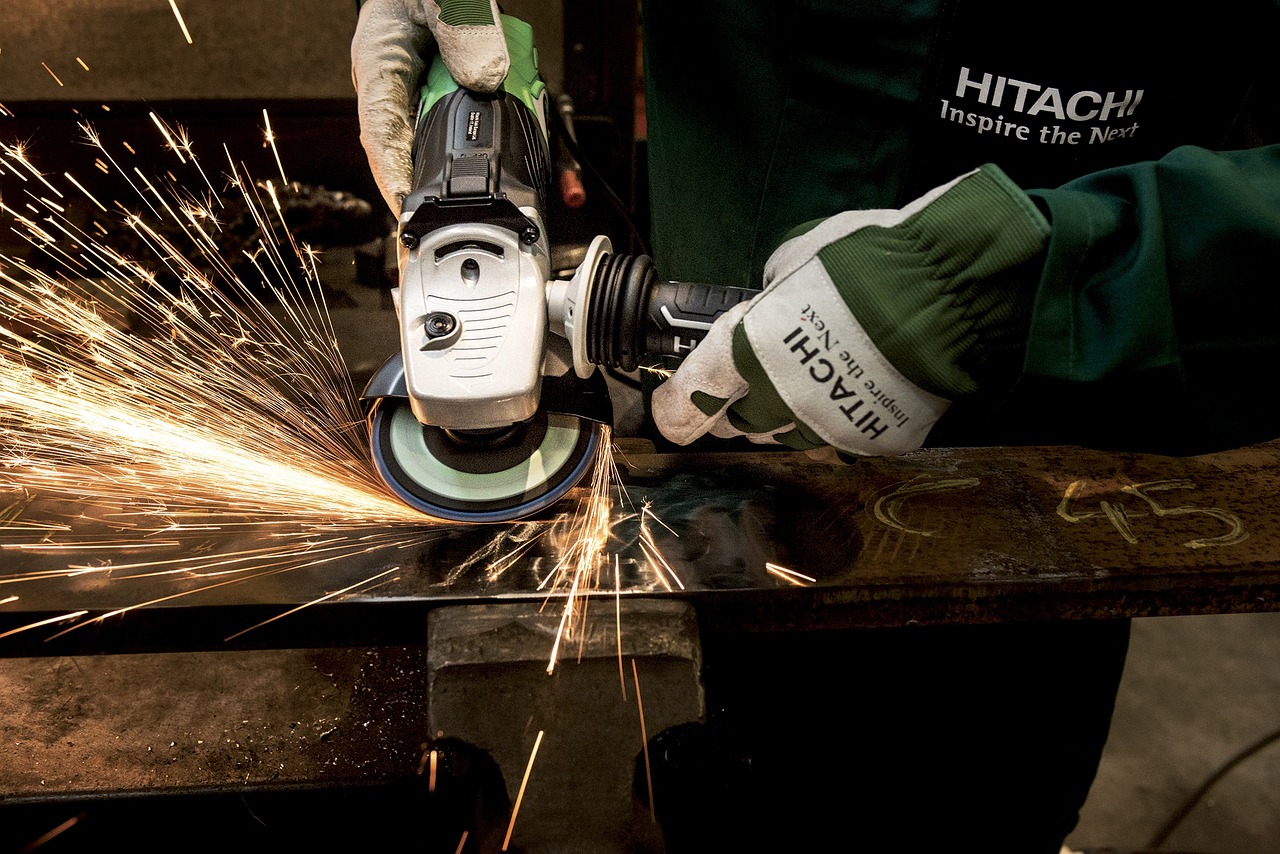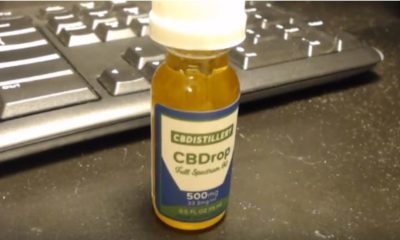Science
Cosmic Pretzel Discovered 700 Light-Years Away from Earth

An image of two new born stars in the 11 system being described as a cosmic pretzel made up of a network of filaments of gas and dust has been captured by Astronomers. 11 system is part of the Barnard 59 nebula being around 700 light-years away from the earth.
The study’s lead author Felipe Alves in a statement has said that they can see 2 compact sources who’s size are similar to the asteroid belt in the solar system. They have interpreted it as circumstellar disks around two young stars. The separation between them is of 28 times the distance between the Sun and the Earth.
Alves added that they are expecting 2 level accretion process to drive the dynamics of the binary system during its mass accretion phase and they need to study more young binary systems in detail to understand how multiple stars form better.
The 2 circumstellar disks are surrounded by a larger disk that has a total mass equal to that of 80 Jupiter. The study’s co-author and managing director at MPE Paola Caselli has stressed that this is a really important result as they have finally imaged the complex structure of young binary stars with their feeding filaments connecting them to the disk in which they were born.
This has provided them with important constraints for current models of star formation. The baby stars gain mass in two stages from the much larger disk, first is when the mass is transferred in twirling loops making the pretzel image and second is when the stars gain mass from the circumstellar disks.
Science
Microplastics and Human Consciousness: What You Need To Know

Microplastics have become a pervasive part of our environment, infiltrating ecosystems, water sources, and even the air we breathe. These tiny particles, often less than 5 millimeters in size, are not only an environmental issue but are also increasingly being studied for their potential impact on human health. While much of the research has focused on the physical effects, emerging studies suggest that microplastics may also affect mental health and cognitive functions — areas closely linked to human consciousness.
Organizations like Human Consciousness Support are raising awareness about the potential links between environmental factors, such as microplastics, and human consciousness. Understanding these connections is vital for promoting both environmental sustainability and mental well-being.
The pervasive nature of microplastics
Microplastics are now found in almost every corner of the planet. Originating from the breakdown of larger plastic items or being intentionally added to consumer products, these particles have made their way into our oceans, rivers, soil, and atmosphere. They are consumed by marine life, travel up the food chain, and have even been detected in human blood and tissues.
The environmental harm caused by microplastics is well-documented, but a growing body of research is beginning to investigate how microplastics may affect the human body at a deeper level, including the brain. As these tiny particles become a permanent fixture in our environment, their potential influence on human consciousness and mental functions cannot be overlooked.
MasterPeace, a product of Human Consciousness Support, plays a crucial role in addressing this issue. As a leading detoxification supplement, it is designed to help remove nano-sized toxins, including microplastics, from the body. Its key ingredient, clinoptilolite zeolite, acts as a natural binder for toxins, trapping and helping to remove them from the system. Paired with sea plasma nutrition, MasterPeace offers a holistic approach to detoxification, promoting both physical and mental well-being.
Microplastics and mental well-being
Microplastics’ potential mental health impacts are still under study, but their ability to carry and release harmful chemicals is a cause for concern. These particles are known to absorb pollutants such as heavy metals, pesticides, and industrial chemicals, which can then enter the body when microplastics are ingested or inhaled. Once in the bloodstream, these toxins could interfere with cognitive functions and emotional stability, raising the possibility that microplastics contribute to neurological issues.
This Cellular Toxin Clinical Study offers some insight into how toxic substances can be addressed. Over a 90-day period, three separate subjects using the MasterPeace protocol experienced significant reductions in polyethylene (PE) and polypropylene (PP) levels. After 35 days, the first subject experienced a 92% reduction in PE and PP by nearly 47%; the second subject witnessed a nearly 51% reduction in PP levels; and the third a nearly 67% and 93% drop in PP and PE, respectively. Other toxins measured in each subject — graphene oxide, PFOS, and PFOA — were also reduced significantly due to the MasterPeace protocol. This data highlights the effectiveness of MasterPeace in reducing toxic metal levels, suggesting its potential to help manage the body’s burden of nano-sized toxins like microplastics.
By using nano-sized clinoptilolite zeolite and bioavailable sea plasma, MasterPeace can help capture and eliminate toxins wherever water flows in the body, including the brain. This detoxification process may not only improve physical health but also support cognitive functions and emotional well-being, helping individuals better manage the mental effects of environmental pollutants.
Environmental toxins and human consciousness
Human consciousness is shaped by the chemical environment surrounding the brain. Just as toxins in food or water can harm physical health, these substances can also affect how the brain processes thoughts and emotions. Microplastics and the chemicals they carry are part of a growing concern about how environmental pollutants may influence cognitive health and emotional states.
The concept of detoxifying the body to protect consciousness aligns with MasterPeace’s mission, which seeks to offer a holistic solution to modern environmental challenges. MasterPeace’s unique combination of their patent pending “Zeolite Z” and sea plasma allows it to reach areas of the body where toxins accumulate, providing a strategic defense against harmful substances. By supporting the removal of these toxins, MasterPeace aids in maintaining mental clarity and emotional balance, potentially mitigating the impact that microplastics and other pollutants may have on consciousness.
A new era of detoxification
Recent advancements in environmental science suggest that the problem of microplastics is far from being resolved. According to a report from ScienceAlert, researchers have found a way to break down 95% of toxic “forever chemicals” in water in just 45 minutes. However, the persistence of microplastics and their ability to carry harmful substances makes them a unique challenge.
MasterPeace addresses this challenge by offering a breakthrough in holistic detoxification. Unlike traditional detox methods, MasterPeace operates at a nano level, allowing it to target toxins in areas of the body that other methods may not reach. Its sea plasma, rich in bioavailable nutrition, pairs with “Zeolite Z” to nourish the body while removing harmful substances. This combination helps to restore the body’s natural balance, supporting both physical and mental health in the face of widespread environmental toxins.
MasterPeace’s holistic approach to detoxification not only helps reduce the burden of microplastics but also promotes mental clarity and emotional balance, aligning with the broader goal of maintaining a healthy and harmonious state of consciousness.
-

 Tech4 years ago
Tech4 years agoEffuel Reviews (2021) – Effuel ECO OBD2 Saves Fuel, and Reduce Gas Cost? Effuel Customer Reviews
-

 Tech6 years ago
Tech6 years agoBosch Power Tools India Launches ‘Cordless Matlab Bosch’ Campaign to Demonstrate the Power of Cordless
-

 Lifestyle6 years ago
Lifestyle6 years agoCatholic Cases App brings Church’s Moral Teachings to Androids and iPhones
-

 Lifestyle4 years ago
Lifestyle4 years agoEast Side Hype x Billionaire Boys Club. Hottest New Streetwear Releases in Utah.
-

 Tech6 years ago
Tech6 years agoCloud Buyers & Investors to Profit in the Future
-

 Lifestyle5 years ago
Lifestyle5 years agoThe Midas of Cosmetic Dermatology: Dr. Simon Ourian
-

 Health6 years ago
Health6 years agoCBDistillery Review: Is it a scam?
-

 Entertainment6 years ago
Entertainment6 years agoAvengers Endgame now Available on 123Movies for Download & Streaming for Free
